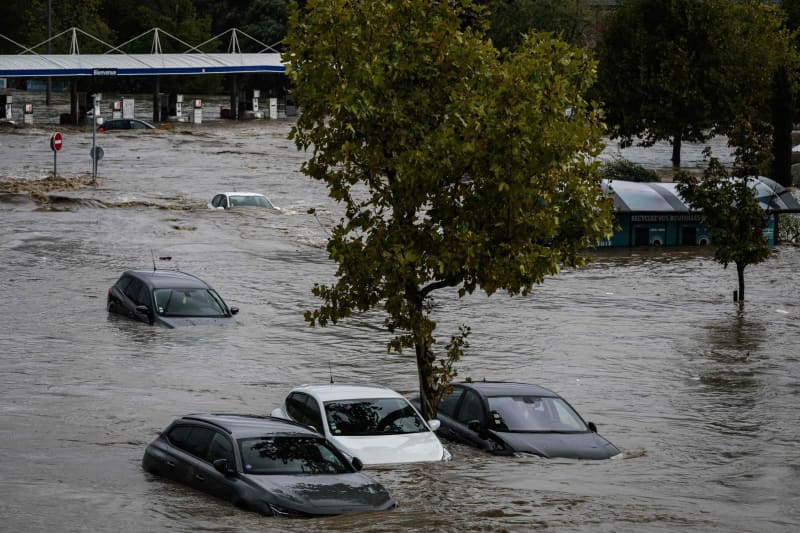Heavy rainfall has wreaked havoc across various regions of France, leading to significant flooding, evacuations, and the closure of key motorways and railway lines. On Thursday, France’s weather service, Météo France, issued its highest red warning level for six southern regions and an orange warning for 34 others, signaling the gravity of the situation as more rain was anticipated later in the evening. The intense rainstorms particularly impacted the Auvergne-Rhône-Alpes region, where approximately 900 people were evacuated from their homes, and several schools had to close their doors. Television footage showcased scenes of devastation, including submerged vehicles, flooded highways, and overflowing supermarkets, which underscored the severity of the flooding.
Transportation was severely affected, especially the motorway and railway line connecting Lyon and Saint-Étienne. The national railway company, SNCF, reported that no train services were likely to operate between these two cities for multiple days due to the flooding and necessary repairs. Adding to the chaos, motorway operator Vinci Autoroutes issued warnings about potential disruptions on over 30 French motorways. The sheer scale of the flooding necessitated the rapid mobilization of resources, with 1,500 firefighters deployed across affected areas to assist in rescue and recovery efforts. Interior Minister Bruno Retailleau assured the public that everything possible would be done to support those impacted by the unexpected flooding.
While reports indicated that no one had sustained injuries initially, authorities were adamant in their warnings against entering flooded areas, emphasizing the danger of attempting to navigate these treacherous conditions on foot or by car. The torrential rainfall extended even to Paris, where meteorologists noted that the city received a volume of precipitation in just one hour that typically would accumulate over two weeks. Minister for Ecological Transition Agnès Pannier-Runacher described the situation as unprecedented, revealing that some areas recorded as much as 60 centimeters of rainfall within a 48-hour period, an event she characterized as “absolutely massive” and unprecedented in living memory.
The floods were described as part of a broader trend of climate-related episodes becoming increasingly frequent, with the minister emphasizing the need for preparation against such extreme weather conditions. In response to the crisis, a specialized unit was established within the ministry to coordinate relief efforts, mobilizing all relevant services to address the ongoing disaster effectively. The French government acknowledged the magnitude of the floods, stressing the collective responsibility to adapt to these changing environmental realities.
In Givors, a particularly distressing situation arose when 47 individuals were trapped inside a flooded supermarket. The store, operated by Carrefour, was overwhelmed by floodwaters, leading to the preemptive closure of additional stores in coastal cities like Nice, Cannes, and Monaco as a precautionary measure. Carrefour’s chief executive, Alexandre Bompard, provided updates regarding the trapped individuals, which included 39 employees and eight customers. Rescue efforts were ongoing, with firefighters assessing the situation to determine when it would be safe to evacuate those stranded.
As the crisis unfolded, the Italian government and its agencies remained vigilant about the potential long-term implications of such catastrophic weather events. The effects of climate change were a recurring theme in discussions surrounding the floods, pushing for a national dialogue on climate adaptation and infrastructure resilience as France faced a grim reality of increasingly severe weather patterns. The government’s handling of the flooding crisis, characterized by swift action and mobilization of resources, aimed to minimize the impact on communities while also laying the groundwork for future resilience against the threats posed by climate change.

